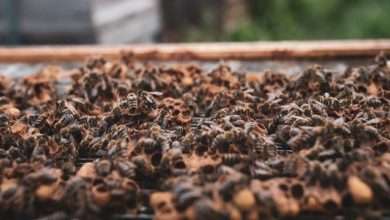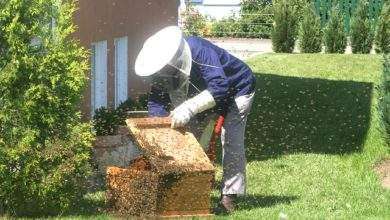Burr Comb Unveiled: Understanding its Role, Formation, and Management in Beekeeping

Beekeepers worldwide are aware of the importance of burr comb in serving their honeybees.
Honey bees are among the most influential species of bees and they have been actively aiding humans in the production of honey and wax since ancient times.
The beekeeping process involves the careful maintenance of colonies of honey bees and their burr comb, as they are essential for successful beekeeping. Understanding and managing burr comb is important for any beekeeper.
What is Burr Comb?
Burr comb, also referred to as bridge comb or brace comb, is an excess comb built by bees in irregular places where it is not intended to be. Unlike the orderly and structured nature of traditional honeycomb, burr comb often appears as a chaotic collection of wax cells and can be found between frames, on top of the frames, or even attached to the hive walls and lid.
Role of Burr Comb in the Beehive
- Brood Production and Organization

Although burr comb may seem disorderly, it serves a significant purpose within the beehive, especially when it comes to brood production and organization. The bees utilize the extra wax to create additional cells for the queen bee to lay her eggs. This surplus of brood cells allows for an increased number of young bees to be born and raised, ultimately contributing to the overall strength and productivity of the colony.
Moreover, burr comb plays a crucial role in the organization of brood within the hive. Beekeepers often witness the construction of burr comb near the brood frames, where the bees use it as a connection between frames or as support for brood cells. By building this bridge comb, the bees ensure proper spacing and distribution of brood, aiding in their efficient care and development.
- Honey Storage and Preservation
In addition to its role in brood production, burr comb also influences honey storage and preservation in the beehive. Bees are extraordinary architects, and sometimes they construct burr comb to create extra storage space for honey reserves. This surplus comb allows them to store more nectar and honey, ensuring the colony’s sustenance during times of scarcity, such as winter or periods of pollen dearth.
Furthermore, the presence of burr comb can aid in preserving the integrity of the honey stores. Bees tend to seal the cells of burr comb with wax, providing an additional layer of protection against potential threats such as pests, diseases, or excessive moisture. This extra barrier contributes to maintaining the quality and freshness of the stored honey, ensuring it remains a valuable resource for the colony.
Formation of Burr Comb
This section explores the factors contributing to the formation of burr comb and how to recognize its signs. Understanding these aspects will help beekeepers maintain the functionality and efficiency of their hives.
Factors that contribute to burr comb formation
1. Bee space and its significance
Bee space is a crucial concept in beekeeping that describes the ideal distance between parallel combs. It was first identified by Reverend Lorenzo L. Langstroth in the mid-19th century and revolutionized modern hive design. Bees tend to fill any space less than 1/4 inch or more than 3/8 inch with burr comb, as they perceive it as disruptive to their orderly system. Maintaining the proper bee space is essential to prevent burr comb formation.
2. Hive design and spacing considerations
The design and spacing of a beehive play a significant role in the potential for burr comb formation. Different hive models may offer varying amounts of space, and beekeepers must choose wisely based on the needs of their colonies. Insufficient space between frames or boxes can lead to bees creating burr comb to bridge these gaps. It is essential to select hive designs that provide adequate space and promote proper bee space measurements.
3. Lack of available space
Sometimes, bees face a shortage of available space within the hive due to overcrowding or inadequate management practices. When a hive becomes overcrowded with bees or honey stores, the bees may resort to building burr comb to create additional storage or living space. Beekeepers must regularly monitor their hives and take appropriate measures, such as adding extra boxes or frames, to ensure sufficient space for the colony’s needs.
Recognition of burr comb formation signs
1. Physical appearance of burr comb
Burr comb can be recognized by its distinctive irregular shape and attachments to non-comb surfaces within the hive. Unlike the uniformly constructed honeycomb, burr comb may appear wavy, sideways, or attached where it shouldn’t be, such as the hive’s lid or the beekeeper’s tools. Its appearance is often messier and less organized than regular comb due to the bees’ improvisational efforts to fill unsuitable spaces.
2. Impact on hive functionality

While burr comb formation may seem insignificant at first glance, its presence can have adverse effects on the functionality of a beehive. The irregularly built comb can impede the beekeeper’s access during inspections, potentially causing damage to the comb and stress to the colony. Burr comb can also hinder the efficient movement of bees between frames, disrupt proper ventilation, and even lead to the accidental killing of queen bees during inspections. Therefore, it is crucial to address burr comb promptly to maintain a healthy and productive hive.
Management Techniques for Burr Comb
Here, we will delve into effective prevention strategies and removal techniques to tackle burr comb issues without causing harm to the bees.
Prevention Strategies
To prevent the occurrence of excessive burr comb, beekeepers must implement proactive measures during hive construction and maintenance. The following prevention strategies are vital for maintaining a hassle-free hive:
- Proper Hive Construction and Maintenance: Beekeepers should prioritize the construction of well-designed hives that provide bees with adequate space to carry out their natural activities. This includes using appropriately sized frames, ensuring proper spacing between frames, and creating suitable entrances and exits for the bees.
- Maintaining Appropriate Bee Space: One of the most critical aspects of hive management is to maintain proper bee space, which refers to the specific gap required for bees to move around within the hive. Beekeepers must ensure that frames are positioned correctly, allowing bees to navigate comfortably without creating excess spaces for comb construction.
- Regular Inspection and Manipulation: Regularly inspecting and manipulating the hive can greatly aid in burr comb prevention. Beekeepers should conduct inspections to identify and address any potential issues promptly. By maintaining optimal hive conditions, such as replacing damaged frames, removing unused equipment, and encouraging proper brood and honey storage, the likelihood of burr comb formation can be minimized.
Removal Techniques
Despite implementing preventive measures, some instances may still require the removal of burr comb. It is important to approach this task with utmost care to avoid damaging the hive or injuring the bees. The following techniques outline effective removal methods:
- Identifying Excessive Burr Comb: Beekeepers should be able to distinguish between regular comb and excessive burr comb. Typically, burr comb appears as irregularly formed wax extensions outside the boundaries of frames or where they cause hindrances to hive functionality. Consistent inspection and observation will help identify areas where burr comb needs to be addressed.
- Safely Removing Burr Comb Without Causing Harm: Once excessive burr comb is identified, beekeepers must proceed with caution to remove it without causing harm to the bees. It is crucial to use appropriate tools such as hive tools, scrapers, or brushes to gently detach the unwanted comb. The goal is to minimize disruption while ensuring that the bees remain unharmed throughout the process. Proper protective gear should be worn to avoid potential bee stings.
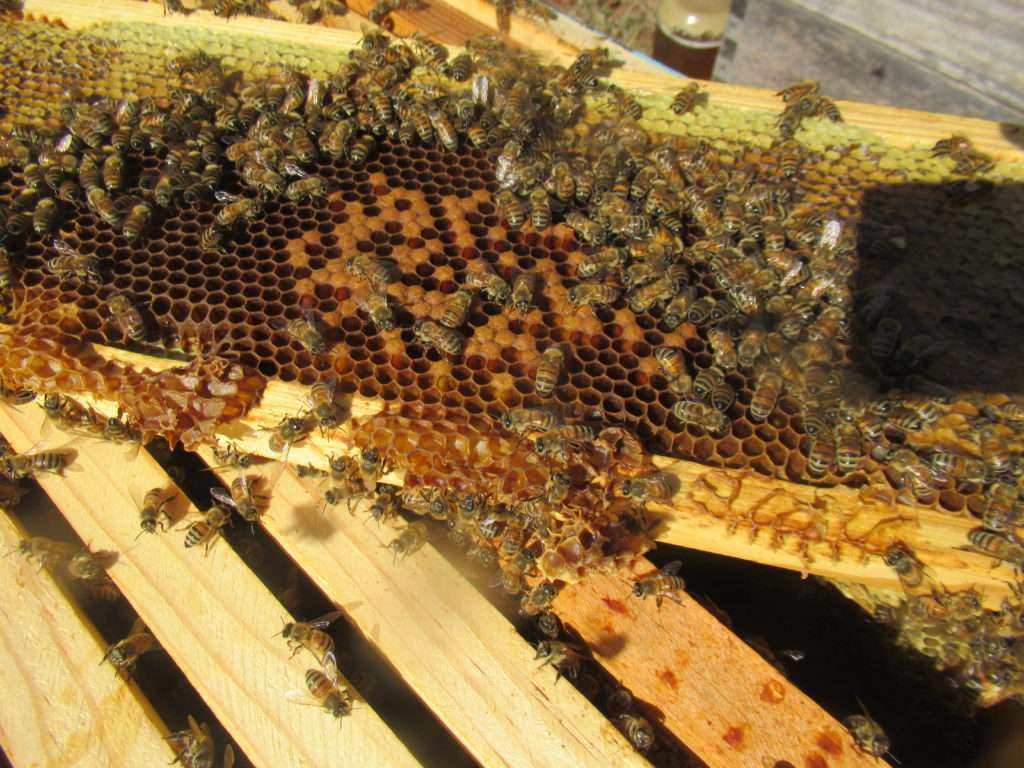
Potential Benefits of Burr Comb
From the collection and utilization of excess honey to the advantages it brings to natural comb building and colony health, burr comb can prove to be a valuable asset in beekeeping practices.
Collection and utilization of excess honey
1. Honey harvesting from burr comb
One of the primary benefits of burr comb lies in the opportunity it provides for beekeepers to collect and utilize excess honey. Burr comb, also known as bridge comb, is the comb that extends between frames or attaches itself to hive walls or other structures within the hive.
During honey harvesting, this additional comb can be carefully removed and processed for its precious honey content. While it may not yield as much honey as traditional frames, the honey extracted from burr comb can still contribute to the overall honey production of the colony.
2. Processing and storage considerations
When it comes to processing and storing honey harvested from burr comb, certain considerations should be taken into account. The honey extracted from burr comb may vary in terms of moisture content, flavor, and aroma. Thus, it is important to separate it from the main honey production and process it separately to maintain its unique qualities.
Additionally, proper storage of honey harvested from burr comb is crucial to ensure its quality and prevent crystallization. Storing it in clean, airtight containers away from direct sunlight and at an optimal temperature will help preserve its flavor and texture for longer periods.
Natural comb building and colony health advantages
1. Encouraging natural brood rearing
Burr comb can play a significant role in encouraging natural brood rearing within the colony. Bees have an innate instinct to build comb, and allowing them to construct burr comb provides them with a sense of autonomy in expanding their brood nest.
By leaving sections of the hive without frames, bees will naturally build burr comb for brood rearing purposes. This natural approach can enhance colony health, as it allows the bees to create a brood pattern that aligns with their specific needs and preferences.
2. Supporting genetic diversity within the colony
Another advantage of burr comb lies in its ability to support genetic diversity within the colony. Bees utilize the extra space provided by burr comb to build drones and store pollen. Since drones are responsible for mating with queens from other colonies, this process encourages genetic diversity and helps maintain the overall health and resilience of the bee population.
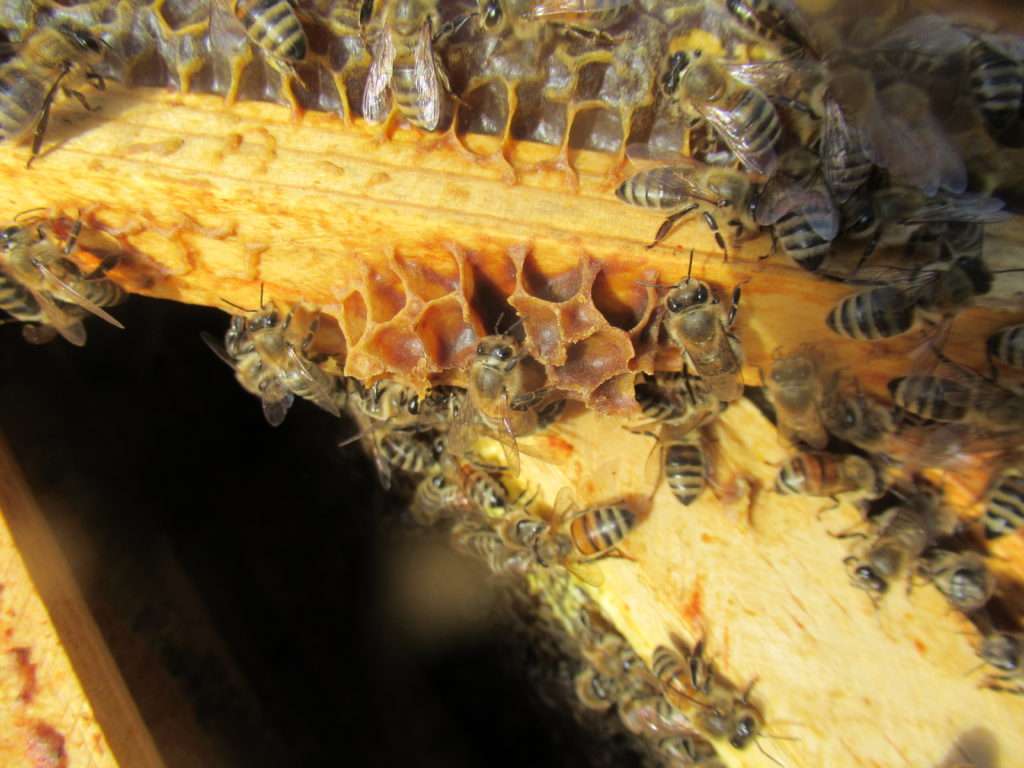
Conclusion
Understanding and managing burr comb is an important process that all beekeepers should be familiar with. Burr comb provides a place for honeybees to store their honey and larvae which is essential for successful beekeeping. Keeping the burr comb clean and organized, as well as providing an adequate supply of pollen and nectar for the bees, can help beekeepers maximize their honey production and be more successful.
FAQs
What is burr comb in beekeeping?
- Burr comb refers to the irregular and excessive comb construction made by bees outside the frames or in areas not intended for brood or honey storage. It usually appears as small protrusions or attachments to the regular comb structure.
Why do bees create burr comb?
- Bees create burr comb for various reasons, such as filling empty spaces, creating additional storage areas, providing support to weak combs, or due to improper hive spacing. It can also occur when bees have access to excessive propolis, causing them to build more comb.
Is burr comb beneficial or harmful to beekeeping?
- While burr comb is considered a nuisance by beekeepers, it can have both benefits and drawbacks. It may offer extra storage space in the hive, but excessive burr comb can make hive inspections challenging, increase the risk of damaging combs, and make the hive more susceptible to pests and diseases.
How can burr comb be managed in beekeeping?
- To effectively manage burr comb, beekeepers should ensure proper hive assembly, maintaining appropriate spacing between frames, and providing enough storage area within the hive. Regular hive inspections and correcting any issues promptly can help prevent excessive burr comb formation.
Can burr comb be removed without harming the bees?
- Yes, burr comb can be removed without harming the bees as long as it is done carefully. Beekeepers can use hive tools to gently scrape off the unwanted burr comb, taking care not to damage the regular comb or injure the bees. Alternatively, burr comb can be carefully cut away using a sharp knife.
What tools are recommended for managing burr comb?
- Beekeepers typically use hive tools, such as a flat scraper or a frame spacer, to manage burr comb effectively. These tools help gently remove or scrape off excess burr comb without causing harm to the bees or the regular comb structure.
Can burr comb formation be prevented?
- While it is challenging to completely prevent burr comb formation, its occurrence can be minimized through proper hive management. Providing sufficient space for the bees, maintaining correct frame spacing, and ensuring a well-designed hive can help reduce the likelihood of excessive burr comb.
8. Will removing burr comb affect honey production?
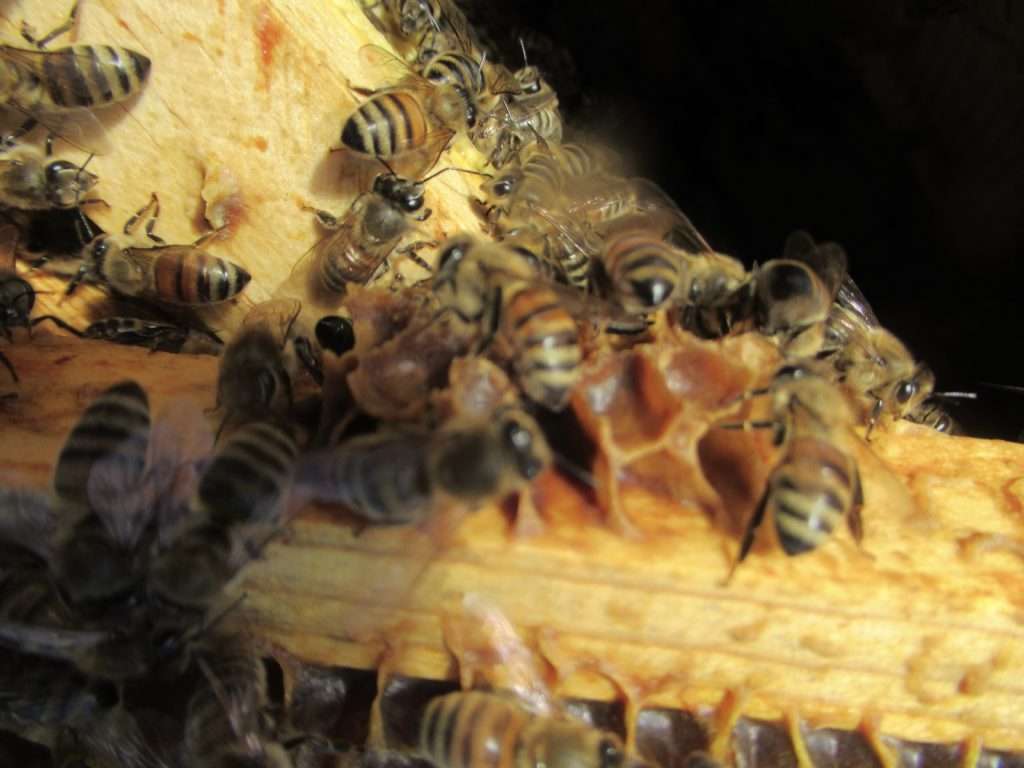
- Removing small amounts of burr comb is unlikely to have a significant impact on honey production. However, removing excessive burr comb may temporarily disrupt the bees’ activities, so frequent and unnecessary removal should be avoided during peak nectar flows.
How often should beekeepers check for burr comb?
- Beekeepers should conduct regular hive inspections to check for any signs of burr comb formation. For an established hive, inspecting at least once a month is recommended, but the frequency may increase during the warmer seasons when bees are more active.
Can burr comb be repurposed or used in any way?
- Yes, burr comb can be repurposed or used in various ways. Beekeepers may melt it down to collect beeswax for making candles, lip balms, or other beeswax products. Burr comb can also be left outside the hive to allow local bees to collect any remaining honey or simply composted.
